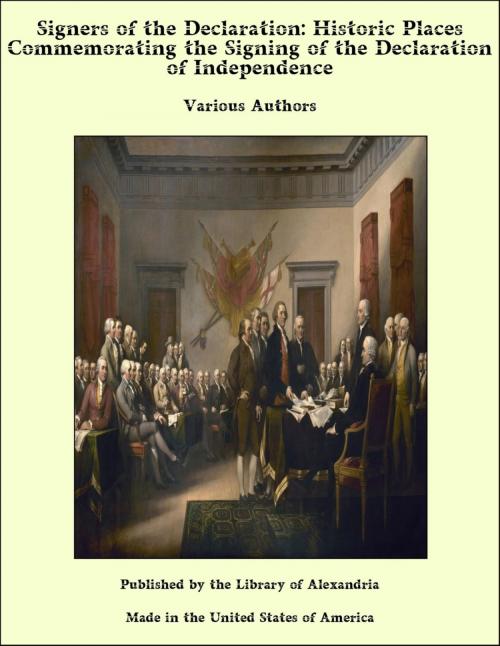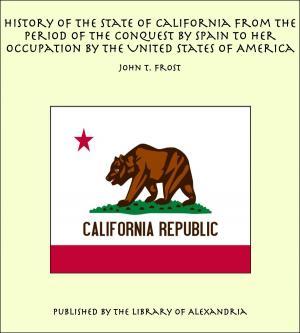Signers of the Declaration: Historic Places Commemorating the Signing of the Declaration of Independence
Nonfiction, Religion & Spirituality, New Age, History, Fiction & Literature| Author: | Various Authors | ISBN: | 9781465617552 |
| Publisher: | Library of Alexandria | Publication: | March 8, 2015 |
| Imprint: | Language: | English |
| Author: | Various Authors |
| ISBN: | 9781465617552 |
| Publisher: | Library of Alexandria |
| Publication: | March 8, 2015 |
| Imprint: | |
| Language: | English |
At Philadelphia in the summer of 1776, the Delegates to the Continental Congress courageously signed a document declaring the independence of the Thirteen American Colonies from Great Britain. Not only did the Declaration of Independence create a Nation, but it also pronounced timeless democratic principles. Enshrined today in the National Archives Building at Washington, D.C., it memorializes the founding of the United States and symbolizes the eternal freedom and dignity of Man. By the time the Continental Congress adopted the Declaration in July 1776, the War for Independence had been underway for more than a year. Failing to obtain satisfactory redress from the mother country for their economic and political grievances during the previous decade, the colonists had finally resorted to armed conflict. These grievances had come to a head shortly after the French and Indian War (175463). Long and costly, the war depleted the royal treasury and added the financial burden of administering the vast territory acquired from France. Britain levied new, direct taxes in the Colonies and tightened customs controls. The colonists, accustomed to considerable economic freedom, resented these measures. A number of Americans also felt that some sort of conspiracy existed in England to destroy their liberties and self-government. They believed that the mission of the large force of redcoats assigned to the Colonies actually was internal suppression rather than protection from a nonexistent external threat, especially since the French had been expelled. Particularly aggravating was the realization that the new tax levies supported the force. Some of the discontent was regional in nature. Indebtedness to British creditors irritated Southern planters. Commercial interests in the Middle Colonies disliked the prohibition on manufacturing certain products. Frontier settlers and speculators were irked at restrictions on westward expansion and the Indian trade.
At Philadelphia in the summer of 1776, the Delegates to the Continental Congress courageously signed a document declaring the independence of the Thirteen American Colonies from Great Britain. Not only did the Declaration of Independence create a Nation, but it also pronounced timeless democratic principles. Enshrined today in the National Archives Building at Washington, D.C., it memorializes the founding of the United States and symbolizes the eternal freedom and dignity of Man. By the time the Continental Congress adopted the Declaration in July 1776, the War for Independence had been underway for more than a year. Failing to obtain satisfactory redress from the mother country for their economic and political grievances during the previous decade, the colonists had finally resorted to armed conflict. These grievances had come to a head shortly after the French and Indian War (175463). Long and costly, the war depleted the royal treasury and added the financial burden of administering the vast territory acquired from France. Britain levied new, direct taxes in the Colonies and tightened customs controls. The colonists, accustomed to considerable economic freedom, resented these measures. A number of Americans also felt that some sort of conspiracy existed in England to destroy their liberties and self-government. They believed that the mission of the large force of redcoats assigned to the Colonies actually was internal suppression rather than protection from a nonexistent external threat, especially since the French had been expelled. Particularly aggravating was the realization that the new tax levies supported the force. Some of the discontent was regional in nature. Indebtedness to British creditors irritated Southern planters. Commercial interests in the Middle Colonies disliked the prohibition on manufacturing certain products. Frontier settlers and speculators were irked at restrictions on westward expansion and the Indian trade.















